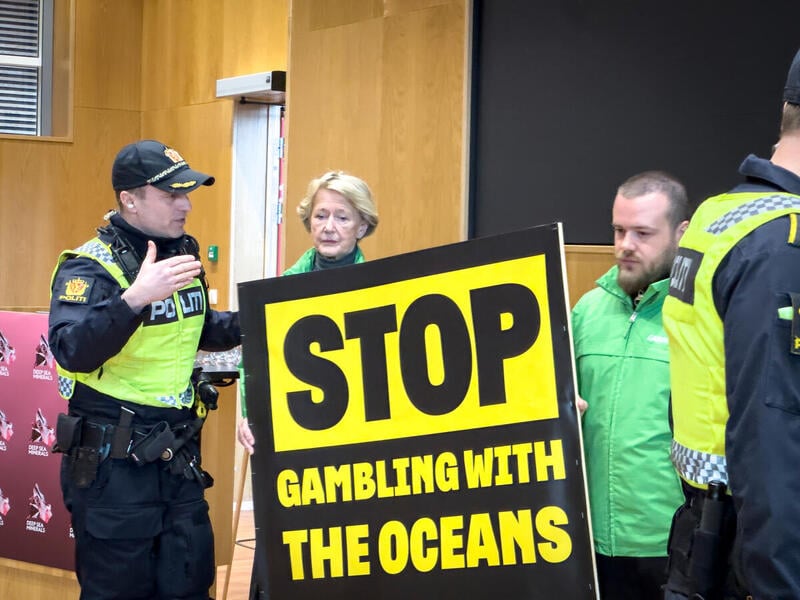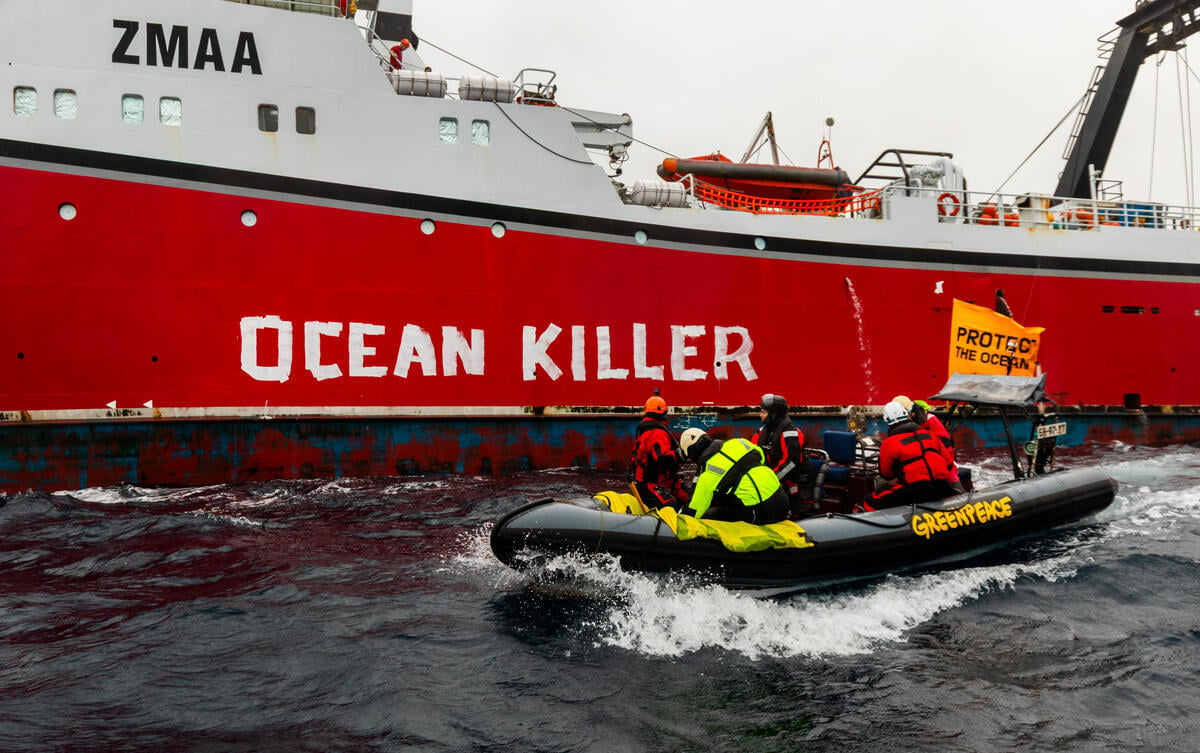King George Island, Antarctica – Researchers on board a Greenpeace International expedition to identify vulnerable ecosystems on the Antarctic seafloor have conducted what is believed to be the southernmost scientific submarine dive in history, at 65 degrees south. Scientists witnessed an “incredible abundance of life, including corals and other vulnerable species” and will use it as evidence to call for the area to receive special protection at the Commission for the Conservation of Antarctic Marine Living Resources (CCAMLR). The expedition managed to enter the remote Weddell Sea as Antarctic sea ice reached the lowest extent on satellite record. [1]
The submarine pilot, John Hocevar, from Greenpeace’s Protect the Oceans campaign said:
“The deep world we saw down there would normally be covered by ice, it was an incredible abundance of life. But there’s now less ice in Antarctic waters than at any time in recorded history. Since the last record was broken in 2017, an area of sea ice roughly the size of Switzerland has disappeared. This ice is used to protect this precious region, now we need governments to. We urgently need ocean sanctuaries created across Antarctic waters to protect this crucial ecosystem and give it space to recover.” [2]
Dr. Susanne Lockhart, Research Associate at the California Academy of Sciences and leading scientist of the expedition, said:
“It was amazing to see how much life there was on a part of the seafloor normally sealed in darkness by sea ice for miles in any direction. We were witness to not just a surprising abundance of life but also an incredible diversity of corals and other highly vulnerable species.
“Marine life has been thriving here, hidden below sea ice, for thousands of years. We will use data from this dive to call for the area to be designated a Vulnerable Marine Ecosystem and get the protection it urgently needs.”
The latest IPCC report calls for 30 to 50% of the world’s oceans to be protected. The report also says climate change has caused substantial damage and increasingly irreversible losses to marine ecosystems. The extent and magnitude of climate change impacts are larger than estimated in previous assessments. [3]
The Weddell Sea is the site of a vast proposed Marine Protected Area (MPA) – or “ocean sanctuary” – first proposed nearly a decade ago. Greenpeace International has previously slammed CCAMLR for letting exploitation of Antarctic waters drive its agenda, leaving only 5% of Antarctic waters protected, despite a commitment from the Commission to have completed a representative network of marine protected areas by 2012. [4]
This current expedition is part of Greenpeace’s campaign to protect at least 30% of the global oceans by 2030. This week, governments are meeting at the United Nations to agree on a Global Ocean Treaty – an essential new tool to create a network of ocean sanctuaries, free from harmful human activity, across international waters.
ENDS
Notes to editors
Images from the expedition’s submarine dives can be found in the Greenpeace Media Library.
[1] The submarine dive took place at 65°03.624’S 055°54.300’W. Although the sea ice extent in the region can change dramatically, this year’s drop is an unprecedented record.
[2] John Hocevar is Head of Oceans at Greenpeace USA
[3] New IPCC report: we are not prepared for what is coming
[4] Greenpeace slams Antarctic Ocean Commission for ‘failing its mandate’ to protect Antarctic waters
Contacts:
Luke Massey, [email protected]
Greenpeace International Press Desk:
[email protected], +31 (0) 20 718 2470 (available 24 hours)
Follow @greenpeacepress on Twitter for our latest international press releases



